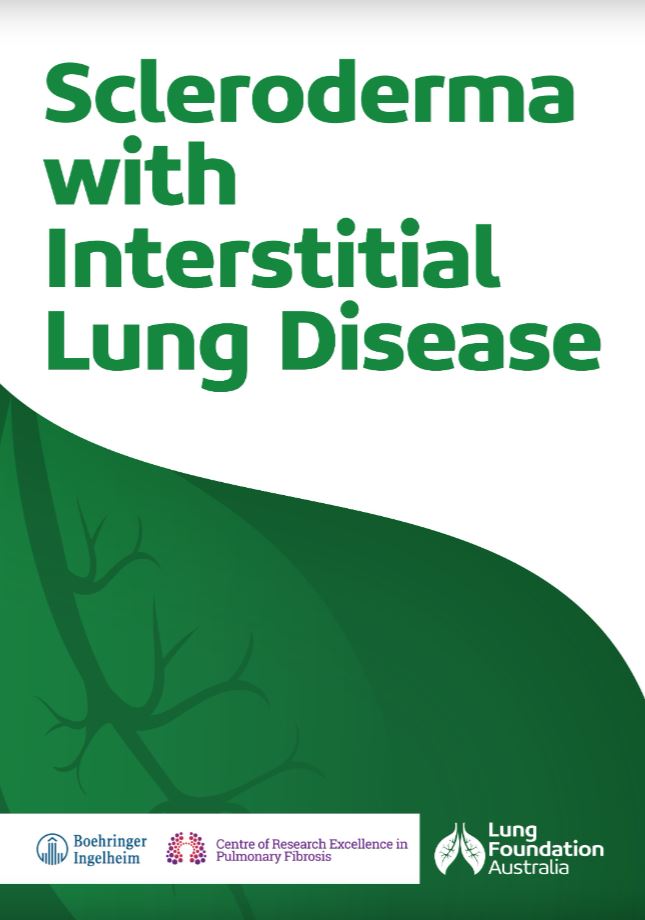The scleroderma with ILD fact sheet has been designed to provide an understanding of the causes, symptoms and diagnosis of Systemic Sclerosis-related ILD. The resource provides information to support with symptom management and provides an overview of the treatments available for SSc-ILD.
Scleroderma, also known as systemic sclerosis, is an autoimmune disease characterised by the thickening and tightening of the skin and narrowing of blood vessels. When it affects the lungs, it is referred to as Systemic Sclerosis-related Interstitial Lung Disease (SSc-ILD). This condition can also impact internal organs such as the lungs, oesophagus, kidneys, heart, and blood vessels.
The exact cause of scleroderma is unknown, but it is believed to result from a combination of genetic predisposition and environmental triggers, such as exposure to crystalline silica in industries like stone masonry, mining, and construction.
Scleroderma symptoms vary depending on the organs involved. Common symptoms include:
- Skin changes (thickening, tightening, hardening, colour changes, red spots)
- Raynaud’s phenomenon (fingers/toes turning white, blue, then red)
- Puffy fingers, sores, and pitted scars
- Breathlessness, cough, fatigue (if lungs are involved)
- Reflux, heartburn, swallowing difficulties
- High blood pressure, pulmonary hypertension
- Stiff and painful joints
Diagnosing SSc-ILD involves a physical examination, blood tests for antibodies, and various other tests to assess organ involvement. Specific tests for lung involvement include high-resolution computed tomography (HRCT) scans and lung-function tests.
Treatment aims to stabilise lung function and prevent further deterioration. Options include:
- Immunosuppressive medications (prednisolone, mycophenolate, azathioprine, cyclophosphamide)
- Monoclonal antibodies (rituximab)
- Anti-fibrotic therapies (nintedanib)
- Stem-cell and lung transplantation (in severe cases)
Managing SSc-ILD involves regular monitoring by a respiratory specialist, pulmonary rehabilitation, maintaining a healthy lifestyle, and staying up-to-date with vaccinations. Support from healthcare teams, family, and peer groups is crucial. For more information and support visit Lung Foundation Australia’s website www.lungfoundation.com.au
Was this page helpful?
Good job! Please give your positive feedback
How could we improve this post? Please Help us.
